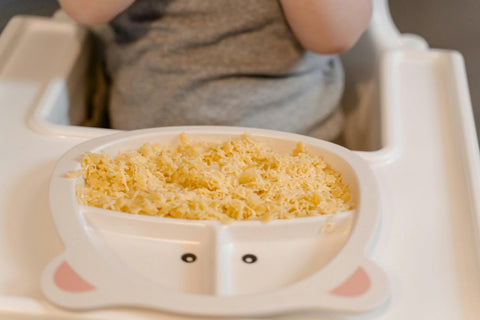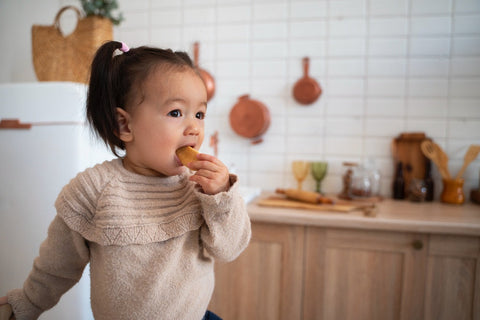The moment your little one starts showing interest in solid foods is a thrilling milestone for any parent. It opens up a whole new world of flavours and experiences for them, but it can also bring a flurry of questions about food texture. Getting the texture right isn't just about making food appealing; it's crucial for your baby's development and safety.
This guide is here to break down the different baby food textures by age and give you clear guidance on when and how to transition from purées, ensuring a safe and positive feeding journey for your little foodie.
Why Introducing Different Food Textures Is Important
Moving through different types of baby food textures is much more than just a culinary journey; it’s a fundamental part of your baby’s overall development. Here’s why it’s so important:
- Developing Motor Skills: Chewing, mashing, and picking up food all contribute significantly to the development of oral motor skills, which are also used for talking.
- Encouraging Adventurous Eating: Exposing your baby to different types of food textures from an early age can help them become more adventurous eaters later on.
- Supporting a Balanced Diet: As babies progress through different types of food textures, they gain access to a wider variety of foods, enabling a more balanced and comprehensive diet.
- Building Confidence and Independence: When babies learn to handle different textures and eventually feed themselves, it builds their confidence and fosters a sense of independence during mealtimes.
That said, progressing through textures safely and appropriately is key to minimising choking risks. Each stage builds on the last, strengthening the muscles and coordination needed to manage more complex foods effectively.
The Stages of Baby Food Texture
Texture progression is a key part of your baby's weaning journey. Let's explore the stages of food texture by age:

Stage 1: Smooth Purées (4-6 Months)
The primary goal of this stage is to introduce the sensation of solid food in their mouth and allow babies to learn how to swallow something other than liquid. Foods at this stage are very smooth, lump-free, and often thinned with breast milk, formula, or cooled boiled water to a runny consistency. Think of it as slightly thicker than milk.
Common first foods for babies at this stage include:
- Single-ingredient purées of soft fruits like banana, apple or dragon fruit
- Puréed vegetables such as sweet potato, carrot, or beetroot
Stage 2: Thicker Purées and Mashed Foods (6-8 Months)
Once your baby is comfortably swallowing smooth purées, they're usually ready to transition to a slightly thicker consistency. From 6-8 months, babies should be encouraged to use their tongue to move food around their mouth more actively and to prepare them for more complex textures. This also helps them practice the oral movements needed for chewing, even if they don't have teeth yet.
Stage 2 foods have a thicker purée with some soft lumps or a mashed texture. For example:
- Mashed banana or mango (without pureeing to a liquid)
- Thicker vegetable purées (like mashed potato or pumpkin)
- Finely ground meats mixed with purée
You can read more about how to introduce solid foods to a baby in our dedicated guide, which covers more on how to introduce solid foods and provides practical tips on safe food preparation.

Stage 3: Soft Finger Foods and Minced Foods (8-12 Months)
This exciting stage marks the introduction to finger foods and minced textures. At this age, the goal is to further develop the pincer grasp (the ability to pick up small objects using the thumb and forefinger), encourage chewing (even if they're mostly gumming the food), and allow for more independence during mealtimes.
Foods should be small, soft pieces that can be easily picked up and gummed by the baby. They should be easily mashed between your own thumb and forefinger (this is where chunky baby food comes into play).
Some examples of Stage 3 foods are:
- Small cubes of soft-cooked sweet potato or pumpkin
- Small minced pieces of tender chicken or fish
- Soft-cooked and chopped up vegetables
- Bite-sized pieces of soft bread
Stage 4: Chopped Foods and Family Meals (12+ Months)
By their first birthday, most babies are ready for the final transition to a family diet and exploring a wide range of textures and tastes. Foods at this stage are typically finely chopped or shredded and closely match the family meal, adapted for safety, such as:
- Soft-cooked and chopped up vegetables
- Shredded chicken or beef
- Soft and cut-up noodles
- Soft-cooked porridge
However, at this stage, parents should still continue to avoid hard, difficult-to-chew items and common choking hazards without proper modification. These foods should only be introduced when your child is older and has molars to chew with, at around 13 and 19 months.
Tips for Safe Texture Progression
Navigating the journey of baby food consistency and texture progression requires attentiveness and patience. Here are quick tips to ensure a safe and positive experience:
Tip 1: Always supervise your baby while they are eating. This is non-negotiable as babies can choke quickly and silently. So be sure to stay within arm's reach and watch them closely.
Tip 2: Watch for signs of readiness for the next stage. Don't rush, but look for cues like them stopping gagging on lumps, showing interest in picking up food, trying to chew, or managing the current texture with ease. These are far more important than age alone. If your baby doesn't like the texture of food at a certain stage, it's okay to go back a step or offer it again in a few days.
Tip 3: Never force a transition; every baby progresses at their own pace. Some babies take to new textures quickly, while others need more time. If your baby resists chunky baby food or gags frequently, it might mean they need more time with softer textures. Patience and persistence (without pressure) are key when transitioning your baby from purees to solids.
Tip 4: Offer a variety of textures at each stage to broaden their palate and skills. Within each stage, offer a range of different foods. This not only introduces them to diverse flavours but also strengthens different oral motor skills.
Tip 5: Avoid hard, raw vegetables and other choking hazards. This includes whole grapes, large pieces of meat, nuts, seeds, and sticky foods. Always cut food into small, manageable pieces, especially for younger babies.
Remember, the goal is a gradual, safe, and positive experience. Don't worry about when to transition too quickly; your baby will show you when they're ready.
Little Barn: Smooth Transitions for Happy Eaters
The journey of introducing new textures to your baby is a wonderful adventure, but it doesn't have to be a stressful one. At Little Barn, we understand the desire to provide your baby with the best, freshest, and safest foods at every stage of their development, without adding extra pressure to your already busy life.
That's why we offer convenient, purées, ready-to-heat baby porridges, and toddler meals delivered straight to your door. Our meals are carefully crafted for each stage, ensuring a smooth and safe transition through different textures by age. Explore our range today and discover how easy and joyful mealtimes can be!






Comments (0)
There are no comments for this article. Be the first one to leave a message!